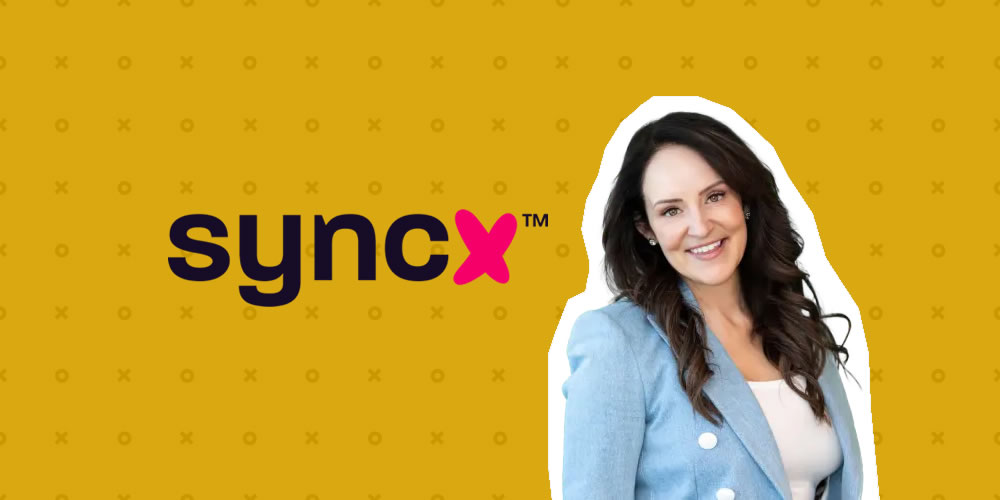The healthcare industry could use a shift in mindset from only focusing on hiring full-time providers to opening positions up to more contingent workers.
That’s been a driving force of Syncx, a locum tenens staffing marketplace that built its technology stack to take a data-driven approach to managing the healthcare industry’s contingent workforce.
Contingent locum tenens providers are a necessary part of healthcare staffing, and there’s no reason they should be looked at anymore as a “necessary evil,” according to Syncx CEO Melissa Byington.
“A majority of all locum tenens openings are because [facilities] are hiring for a full-time provider,” Byington notes. “That system is going to fill full-time needs with a temporary candidate. So, we want to help that system be as efficient as it possibly can with technologies in place to have the best chance to fill the position.”
According to Byington, Syncx helps healthcare systems and staffing agencies run efficiently through three services: a traditional managed service provider (MSP) service, a perm applicant tracking system (ATS) for in-house recruiters, and a proprietary “float pool” technology that helps agencies “leverage their network to maximize efficiency.”
While Syncx is newer to the MSP/VMS market, they’ve seen significant growth. They currently serve 51 hospitals and work “hand-in-hand” with 42 active agencies.
“We’ve been around only two short years, but already have seen some amazing results from our unique offering,” Byington says. “We’ve grown 91% YTD in 2023 and it doesn’t look to be slowing anytime soon.”
A More Democratized Free Market
Byington emphasizes that Syncx isn’t for everyone, but that’s a point they take pride in. Syncx wasn’t created to help rich companies get richer. They believed that In a field like healthcare, there’s no justification for a single staffing agency or health system to control the market, according to Byington.
Syncx differentiates itself from the competition by partnering with smaller systems and staffing firms. According to a LinkedIn post from Byington, the company’s focus on smaller markets allows them to be more picky with the partners they choose. Not all clients are a good fit for Syncx. Some may not share their values or envision the kind of partnership they aspire to have.
“We’re intentionally not working with some of the bigger players in the industry because we believe there are a lot of strong up-and-coming smaller players in the locum tenens market that do a lot to provide locum staffing services at a more responsible price point,” she says. “One thing we have that I think is a differentiator in our space is that we don’t have any other corporate parent where the goal is to fill most of those locum tenens positions from within and then branch out to agencies.
“We open up to all agencies at all times. We think by doing that, we help create a more democratized free market.”
Syncx is in a highly competitive market with other major MSP competitors like LocumSmart, Aya Locums, AMN Healthcare, and Cross Cross Country Healthcare, which Byington notes are at the “top of the list.”
“What sets us apart from the rest, with the exception of LocumSmart, is our platform built solely for the locums industry,” she says.
Optimizing Efficiency Without Headaches or Bottlenecks
With Syncx’s MSP, if a supervisor logs in to access the platform, they can see where shifts are open and available, create and manage a monthly calendar, and track the credentialing for different provider candidates from a centralized dashboard. The organization doesn’t have to worry about tacked-on costs either, Byington notes.
“Compared to other MSPs in the space, we’re more cost-effective,” she says. “Some of the larger MSPs charge a fee for implementation and then a reporting fee. But we charge a straight monthly fee to try to make it as accessible as possible to small or mid-sized agencies at a reasonable price point for the client.”
While different companies also offer an MSP service, many of those are traditional nurse staffing brands trying to support the locum tenens industry, Byington says. From her perspective, the model doesn’t work, so Syncx’s system was built specifically to handle the nuances of locum tenens.
“Unlike the others in the MSP space, which were initially developed for travel nursing or general staffing, we were developed exclusively to serve locum tenens,” she says. “These systems require workarounds or manual processes when unique dynamics of the locums business come into play. By eliminating the need for manual workarounds and addressing the inefficiencies of these competing systems, we provide a seamless experience tailored exclusively for physicians and in-house recruiters.”
ATS and Float Pool: A Necessary Ecosystem
Recruiters develop close relationships with their clients. It’s a relationship business and those relationships help recruiters staff hospitals, land top talent, and bring in revenue. But often these relationships take place in a vacuum, Byington claims. Syncx’s perm ATS was designed to help solve this problem.
“Our first and one of our biggest clients had all of these in-house recruiters, but none of them were talking to each other,” she says. “So, each in-house recruiter was managing an employee lifecycle on spreadsheets, email, and different types of things across multiple states and 40 different hospitals working out of different programs.
“A recruiter in one hospital vetted a candidate, onboarded them, and put them in the spreadsheet, not knowing there was a need in another hospital. They weren’t leveraging the power of an internal network and not sharing candidates across their system.”
Perm ATS was designed for in-house recruiters with all the critical components they need to track and manage applicants, post job orders, handle intake forms, and post on job boards from one interface, Byington added.
The MSP and Perm ATS helps facilities solve scheduling, simplify credentialing, and eliminate time wasted on inefficiencies. Syncx’s Float Pool helps health systems leverage their internal network to find already vetted providers.
“Through our Float Pool program, hospitals can experience cost savings of up to 30% when compared to traditional locums. And with our small to mid-sized agency partners and the competitive environment we are able to create we see clients consistently save between 3-7% compared to standard industry rates and those billed by those large agencies mentioned earlier,” she says. “The ecosystem that we created there was necessary.
“If we couldn’t grow internally within the same system, [organizations] can kick out candidates to agencies that have already been vetted. Then, [agencies] can provide services their clients need, and they can help them take control of their locums and maximize their efficiency when they do use agency locums. So, we can demonstrate their ability to save money.”
A Major Disruptor
In May 2023, Byington said the company announced a name change from Synchronized Solutions to Syncx. She said the company’s leaders agreed the previous name didn’t convey the right message.
“With the rebrand, we wanted to be disruptors,” Byington says. “We thought since we can take a bold and innovative approach to connecting these agencies and clients to providers, we need a brand that is also bold, disruptive, innovative, and inclusive.”
Byington claims Syncx wanted to create technology that wouldn’t remove the human connection from the locum tenens business but would instead create a platform that increases an agency or facility’s value to providers while reducing its operating costs.
“We want to continue to gain traction on this idea that we can create this triangle of winning—win for the agency, win for the client, and win for the physician in this industry,” she said. “We also want to be a solution to reduce our small part of healthcare costs while doing good in the locums industry.”










